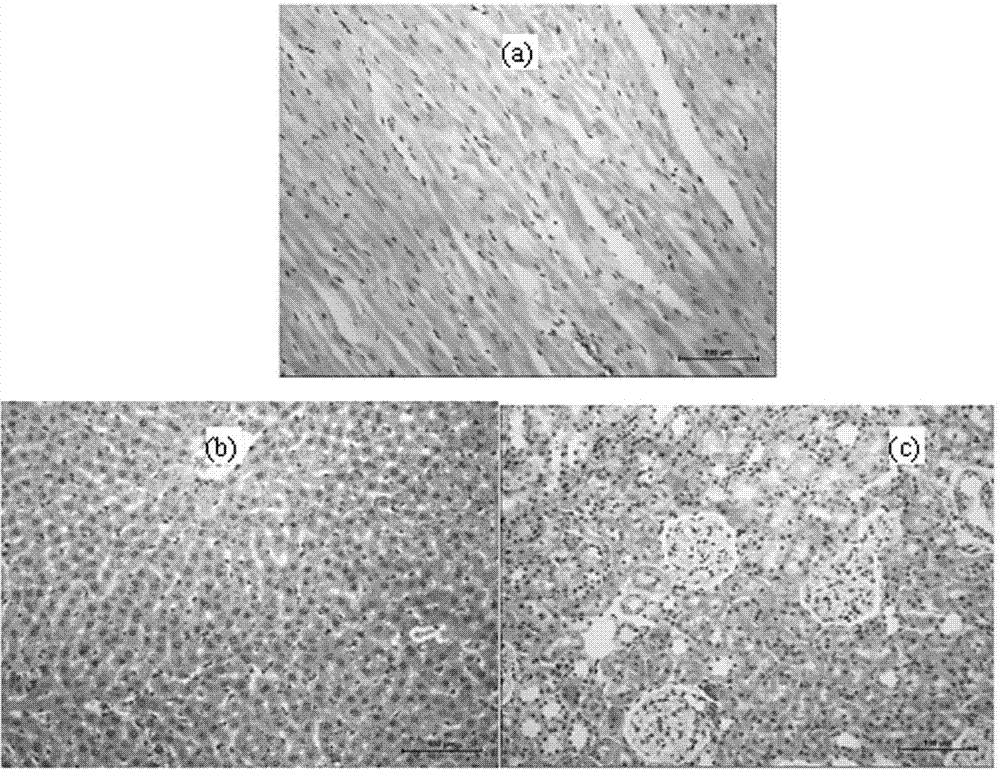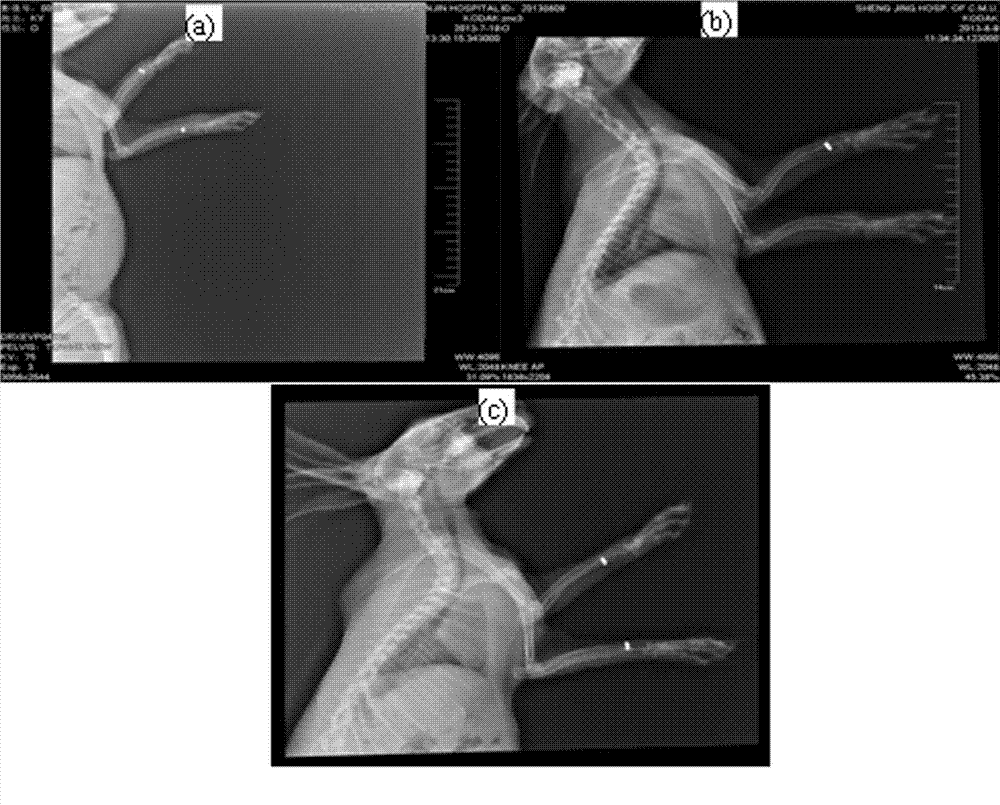Medical biodegradable zinc alloy and preparation method thereof
A zinc alloy, biological technology, applied in the field of materials, can solve the problems of limiting the scope of application, increasing the production of inflammation, low mechanical properties of polymer materials, etc., to achieve the effect of reducing pain and trouble, and avoiding infection
- Summary
- Abstract
- Description
- Claims
- Application Information
AI Technical Summary
Problems solved by technology
Method used
Image
Examples
Embodiment 1
[0039] The composition contains Mg 0.05%, Ag 0.5%, Ca 0.1%, Mn 0.1% by weight percentage, unavoidable impurities ≤ 0.2%, and the balance is Zn;
[0040] Metal zinc, metal magnesium, metal silver, metal calcium and metal manganese are used as raw materials; pure metal zinc is heated to 520±5°C, and metal manganese, metal silver, metal calcium and metal magnesium are added sequentially after the metal zinc is melted, and when all the metal After melting, stir until evenly mixed to obtain alloy melt;
[0041] Cool the alloy melt to 460±5°C, press hexachloroethane into the alloy melt using a graphite bell jar, the pressed hexachloroethane is 0.2% of the total weight of the alloy melt, and then heat the alloy at 460±5°C Keep warm for 20 minutes;
[0042] After the heat preservation and standing, the alloy melt is cooled to 440±5°C and cast into a mold, and the mold is cooled by water during the casting process to obtain an ingot;
[0043] The ingot is kept at 300°C±5 for 100 minute...
Embodiment 2
[0048] The composition contains Mg 1%, Ag 0.01%, Ca 0.5%, Mn 0.01% by weight percentage, unavoidable impurities ≤ 0.2%, and the balance is Zn;
[0049] Metal zinc, metal magnesium, metal silver, metal calcium and metal manganese are used as raw materials; pure metal zinc is heated to 520±5°C, and metal manganese, metal silver, metal calcium and metal magnesium are added sequentially after the metal zinc is melted, and when all the metal After melting, stir until evenly mixed to obtain alloy melt;
[0050] Cool the alloy melt to 460±5°C, press hexachloroethane into the alloy melt using a graphite bell jar, the pressed hexachloroethane is 0.25% of the total weight of the alloy melt, and then heat the alloy at 460±5°C Keep warm for 10 minutes;
[0051] After the heat preservation and standing, the alloy melt is cooled to 440±5°C and cast into a mold, and the mold is cooled by water during the casting process to obtain an ingot;
[0052] The ingot is kept at 300°C ± 5 for 150 mi...
Embodiment 3
[0057] The composition contains Mg 0.005%, Ag 0.1%, Ca 0.15%, Mn 0.15% by weight percentage, unavoidable impurities ≤ 0.2%, and the balance is Zn;
[0058] Metal zinc, metal magnesium, metal silver, metal calcium and metal manganese are used as raw materials; pure metal zinc is heated to 520±5°C, and metal manganese, metal silver, metal calcium and metal magnesium are added sequentially after the metal zinc is melted, and when all the metal After melting, stir until evenly mixed to obtain alloy melt;
[0059] Cool the alloy melt to 460±5°C, press hexachloroethane into the alloy melt using a graphite bell jar, the pressed hexachloroethane is 0.3% of the total weight of the alloy melt, and then heat the alloy at 460±5°C Keep warm for 20 minutes;
[0060] After the heat preservation and standing, the alloy melt is cooled to 440±5°C and cast into a mold, and the mold is cooled by water during the casting process to obtain an ingot;
[0061] The ingot is kept at 300°C±5 for 200 m...
PUM
| Property | Measurement | Unit |
|---|---|---|
| Tensile strength | aaaaa | aaaaa |
| Tensile yield strength | aaaaa | aaaaa |
| Tensile strength | aaaaa | aaaaa |
Abstract
Description
Claims
Application Information
 Login to View More
Login to View More - R&D
- Intellectual Property
- Life Sciences
- Materials
- Tech Scout
- Unparalleled Data Quality
- Higher Quality Content
- 60% Fewer Hallucinations
Browse by: Latest US Patents, China's latest patents, Technical Efficacy Thesaurus, Application Domain, Technology Topic, Popular Technical Reports.
© 2025 PatSnap. All rights reserved.Legal|Privacy policy|Modern Slavery Act Transparency Statement|Sitemap|About US| Contact US: help@patsnap.com



